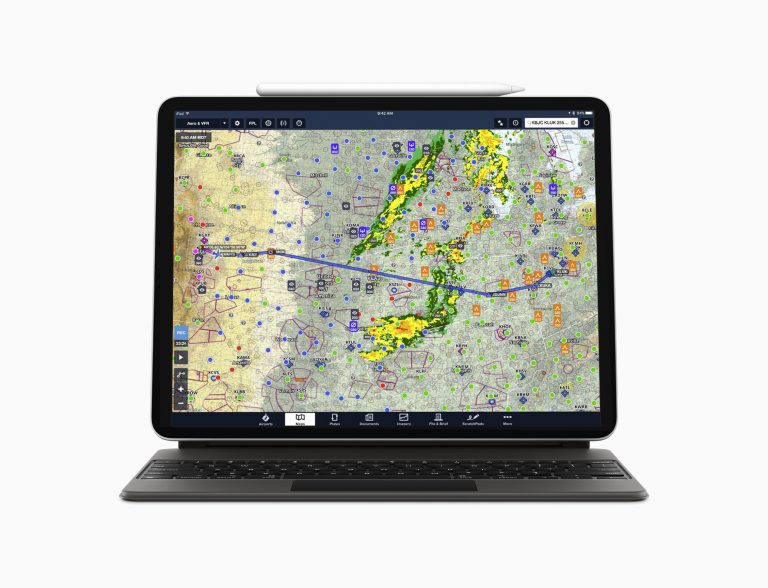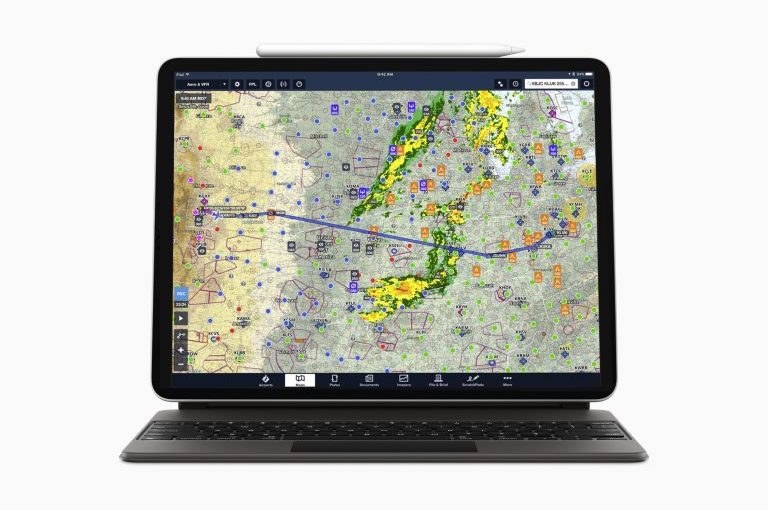
Last fall, Apple started selling to consumers a modestly-refreshed update to the standard iPad. The entry level full-size iPad comes with a healthy feature set at an economic price. Today, Apple announced a brand new fourth generation pro-level tablet with some interesting features, but are they any good for pilots?
The short answer is probably not, but Apple’s proprietary take on LiDAR scanning opens up some interesting possibilities for improved augmented reality that might lead to technological advancements in the cockpit. More on that later. 
Hardware
As expected, both the 11-inch and 12.9-inch iPad Pro receive a modest bump in performance and additional features that continue to blur the line between laptop and mobile device. This improved performance comes courtesy of the enigmatic A12Z processor. Apple leaves much to the imagination concerning this processor. Is it simply a variation of the A12X from the previous iPad Pro, or an entirely new design? All we know for sure is the new A12Z receives an eight-core graphics processor (up from seven), with “tuned performance controllers, and an enhanced thermal architecture.” We’re guessing this simply might mean that each of the eight cores can run at a faster speed. This will be handy to drive complex data-driven maps as popular aviation apps continue to add increased interactivity.
Additionally, the new iPad Pro gets an improved main camera. This appears to be the same dual lens unit from the iPhone 11, which includes a 12 MP wide camera module plus a 10 MP ultra-wide camera module with an LED flash. The new camera is accompanied now with five “studio-quality” microphones that promise to deliver an “immersive sound experience.” Otherwise, the latest iPad Pro receives no other hardware changes and is constructed using the exact same chassis as its predecessor. This is welcome news for pilots with existing cases and/or mounts—no new accessories required.
Software
This new iPad hardware works hand-in-hand with iPadOS 13.4, offering support for Magic Trackpad connectivity. Using a trackpad on iPadOS will mimic the touchscreen experience, including multi-touch gestures. To coincide with this integration, Apple will be happy to sell you a $299 Magic Keyboard. This keyboard includes a trackpad as well as pass-through charging and operates as both a protective case and an adjustable stand. The new keyboard is also backward-compatible with the previous generation of iPad Pro.
LiDAR
Much like cars that use Light Detection and Ranging (LiDAR) for lane assist, adaptive cruise control, and other smart driving features, Apple has added their own short range system, dubbed LiDAR Scanner, to the new iPad Pro. According to Apple, it can measure the distance to surrounding objects up to 5 meters away and operates “at the photo level at nano-second speeds.” This mapping is combined with camera and motion sensor data, to create a “more detailed understanding of a scene.” The intention is to create a completely immersive augmented reality (AR) experience. Apple has gone all-in with regards to augmented reality as it continues to build on their suite of AR hardware and software. With an accurate 3D depth map, apps will instantly be able to place surrounding objects into a virtual realm. It has yet to be seen how this could benefit pilots.
The new 11-inch iPad Pro starts at $799 and it’s $999 for the 12.9-inch, with 128GB of storage in the base configuration. This is twice the storage seen before. Apple is accepting orders now, and the iPad will ship to buyers next week. The Magic Keyboard won’t be available until May.
The post Will The New iPad LiDAR Scanner Change The Game For Pilots? appeared first on iPad Pilot News.
Source: Ipad appsWill The New iPad LiDAR Scanner Change The Game For Pilots?
